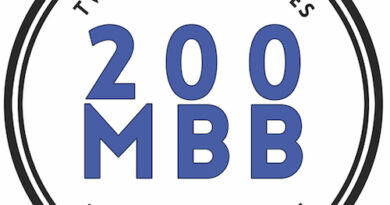Clearances
Many examples of advanced engineering were actually conceived much earlier than you might imagine. The designs couldn’t be implemented until metallurgy, rubber chemistry, manufacturing techniques, and other limiting factors caught up. Engineers knew the advantages of tight tolerances long before today’s infinitesimally small iterations were possible to attain with physical materials, as opposed to just conceptual drawings. Progress marched on and continues to do so, with ideas transformed into realities more and more rapidly by CAD/CAM software. It’s impossible to predict what new extremes the future will bring.

Surely, the factory technicians assembling British motorcycles during their golden era, who had to adjust for dimensional inconsistencies by hand, were unable to conceive of robotic assembly lines and parts that varied from one another so little the discrepancies were virtually immeasurable and functionally irrelevant. Yet they’d have unanimously agreed their products would benefit tremendously from uniform components that fit together perfectly, allowing seals to keep fluids where they belonged and reducing the friction and vibration caused by pieces routinely escaping the confines of their strictly prescribed movements. No present-day motorcyclist would consider a constant puddle of oil under their new bike an unremarkable feature of ownership. We expect better and take for granted gaps measured in several thousandths of an inch. From plain bearings to piston rings to valve trains, the achievement of microscopic clearances has brought innumerable benefits to the performance and reliability of our beloved machines.
Tragically, modern life has taken too many cues from the ideals of industrial production. Strivings toward ever-greater efficiency at both the corporate and individual levels have squeezed human beings into machine-like existences. Over recent decades, the majority of American workers have put in more and more hours for little or no additional inflation-adjusted pay; the carrot of improved finances dangles perpetually beyond whatever amount of time they spend on the job. At least superficially, it’s a great formula for extracting the most from the workforce for the least possible outlay—an efficient business model as long as burned-out employees can be replaced cheaply. On top of this, parents accompany their children to more and more extracurricular activities to keep up with cultural demands to enrich their kids’ development, and most all adults feel a constant pressure to be ever more productive, checking off chores and obligations on a never-ending to-do list, as though he who dies with the most tasks completed and most events attended wins. (Don’t get me started on how this dynamic has devastated treatment of both patients and practitioners in our country’s health care industry.)
 When I was a child in the 60s, grown-ups talked about the misery of the rat race or treadmill of (then) modern life. Ironically, the automation provided by technological advances—predicted back then to soon yield 20-hour work weeks and hugely expanded leisure time for average Americans—has only spurred us on to pursue more achievements in what has ended up being less time. It’s like the increased compression ratios made possible by tinier piston ring/cylinder wall clearances. Things seem to have gotten so much worse that recognition of the problem is actually less prominent today, when you might expect it to be more glaringly vivid. People have crossed some threshold of busy-ness beyond which they’re too frantic and distracted to even notice their own plight and the human sacrifices involved in perpetual strivings to do more and more with less and less—efficiency!! This serves the compulsive internal slave driver quite well; there can be no rebellion without awareness or surplus energy.
When I was a child in the 60s, grown-ups talked about the misery of the rat race or treadmill of (then) modern life. Ironically, the automation provided by technological advances—predicted back then to soon yield 20-hour work weeks and hugely expanded leisure time for average Americans—has only spurred us on to pursue more achievements in what has ended up being less time. It’s like the increased compression ratios made possible by tinier piston ring/cylinder wall clearances. Things seem to have gotten so much worse that recognition of the problem is actually less prominent today, when you might expect it to be more glaringly vivid. People have crossed some threshold of busy-ness beyond which they’re too frantic and distracted to even notice their own plight and the human sacrifices involved in perpetual strivings to do more and more with less and less—efficiency!! This serves the compulsive internal slave driver quite well; there can be no rebellion without awareness or surplus energy.
Surely, we’re all weary of hearing the word, pandemic, but it’s absolutely the right term to apply to the extreme level of stress that has become ubiquitous throughout our species. It’s not only more widespread than COVID-19, but has claimed many more lives, not just as the cause of countless physical health problems or their exacerbation, but also as the destroyer of our quality of life leading up to a hastened final demise. Most folks seeing me for psychotherapy are suffering more from the (often unrecognized) impact of severe and rampant stress than some inherent mental disorder, especially if we consider whatever diagnosable psychiatric condition they present with has been caused or worsened by the overwhelming demands of normal everyday life. We can attribute problems to inadequacies in their coping mechanisms, and that formulation would have some validity, but it likely also discounts or ignores the inhumane conditions and inhuman expectations (imposed by self or others) forming the context of their dilemma. Whether multi-millionaire executives or lower-middle-class laborers, most are more crushed and depleted than sick, although they usually have a host of chronic-stress-induced ailments, both physical and psychological. Wanna guess what they never get down to on those to-do lists? Self-care.
Back to the machines. We would not expect a motor to run without oil, or even regular oil changes. It’s easy for us to appreciate how metal-on-metal friction would destroy the parts involved in short order. An oil film is necessary within the gaps that comprise those aforementioned clearances, no matter their size, to serve as a slippery buffer preventing damage. It would be stupid verging on insane to rush to the racetrack and save time by leaving the engine dry inside. Likewise, to use a more organic illustration, we wouldn’t expect a horse to keep galloping toward our destination without food and water, driven only by the relentless sting of our whip. Obviously, we’d lose more time than we’d gain, once the horse collapsed mid-journey. These are examples of false efficiency. Neglecting self-care is no different. I’d guess the demand for mental health services, which is currently at a height unprecedented during my career, would drop by a third if the general population simply ate, slept, exercised, and socialized more sensibly, and included genuinely restorative recreation in their routines. Add a practice aimed directly at emotional self-regulation, such as yoga, tai chi, or mindfulness meditation, and that demand would drop further. Engagement in an uplifting social group, such as a religious community, volunteer organization, or a regular breakfast meeting would reduce it even more.
Sadly, most people don’t recognize their own need for a level of maintenance they’d have no problem honoring for their motors or horses. They have no time for such frivolity, even as they lose vastly more time to the consequences of their self-neglect, not to mention the erosion of their happiness. The only pseudo-lubricant they pour into their personal crankcases may be alcohol or mindless screen time, both of which serve only to mask the screech and grind of metal against metal, rather than actually protecting against scraping, overheating, and eventual seizing.
If we’re to have a sense of vitality, it’s vitally important to mind our clearances. Merely focusing on our schedules isn’t the whole solution to the above-described ills, but it’s usually an excellent place to start. Just like in the timing of an engine’s moving parts, regularity is crucial. Can we nudge our daily and weekly activities in the direction of greater consistency, starting with the time we spend sleeping? If every single gap we work hard to create for something fun gets filled with surprise last-minute requests from others, can we learn to say “no” and stick to our original plan? Can we even pry open such gaps to start with? I could probably count on my thumbs the number of people I’ve met who are consistently successful in this area. Virtually everyone is guilty of such neglect and vulnerable to taking this kind of damage; I know I certainly am. The key is pausing long enough to a) realize we have more choice in this process than we typically recognize, and b) take sober inventory of its costs.
Common slang for mechanical clearances is slop, which carries a decidedly negative connotation; in many cases that’s fair for machines. Another term is play, which sounds more positive. When applied to clearances in our hectic schedules, play is perfectly apropos. Aside from simply being an alternative to work, play serves critically essential functions in human development, creativity, relationships, and overall fulfillment. I could devote a whole column to play’s social and psychological value, but here’s a quick and incomplete synopsis. In developing animals, us included, play is where essential life skills are developed in safe, low-stakes settings, whether we’re talking about a cat’s physical ability to hunt and fight, or a person’s emotional capacity for cooperation within a group (such development in humans ought to last a lifetime). Likewise, creativity blossoms most fully in the absence of pressure and danger; notice those unbidden brainstorms we have in the shower, and how racing against the clock detracts from our inventiveness when problem-solving. While our relationships can certainly be strengthened by working toward a common goal, enjoyment of relaxation together rounds out those connections with a much fuller appreciation of each other. A sure-fire way to cause relational atrophy is never making time to hang out. Finally, there’s that old adage that no one on their death bed wishes they’d worked more; their regrets are always about how little time they spent doing what they enjoyed most with those they loved best. Play gives us time and space to recover from stress, and to engage in pursuits and connections we treasure as personally meaningful. With no play in the system, mechanical or human, things break down—often catastrophically.

Play is the truly effective lubrication for flesh-and-blood creatures. It’s different from rest, which is just the passive cessation of activity. Play may be vigorously active, requiring all sorts of mental, emotional, and physical effort, but it’s done based on completely free choice, rather than obligation, fear, or anxiety. We do it because we want to do it, not because we must (though it is imperative for our health). Play can involve disappointment and defeat, yet overall it’s inherently joyful and setbacks are generally taken in stride, with renewed investment considered part of the fun. Of course, there are people who approach supposedly playful activities with the same compulsivity they apply at work, always trying to cram more into the space or demanding perfection in every act; this does not count as genuine play.
There’s no mystery in where I’m going with all this. Motorcycling is an extraordinarily versatile form of play, providing endless opportunities for skill mastery (riding, wrenching, navigating, etc.), a broad spectrum of competitive and cooperative engagement (racing, distance challenges, rallies, fund-raising rides, to name just a few), and the peace and quiet of solitude, whether in the saddle or garage. Even when there’s nothing to be done on our bikes and we’re prevented from riding, we can escape the pressure-cooker of life by planning our next big trip, watching a hard enduro on tv, reading an enthusiast publication, or closing our eyes and savoring fond memories of a special ride with great friends. All these ways of enjoying our passion can serve as precious oil, filling the rare and usually miniscule clearances in our daily lives. Pour it in as liberally and as often as you can.
Mark Barnes is a clinical psychologist and motojournalist. To read more of his writings, check out his book Why We Ride: A Psychologist Explains the Motorcyclist’s Mind and the Love Affair Between Rider, Bike and Road, currently available in paperback through Amazon and other retailers.



